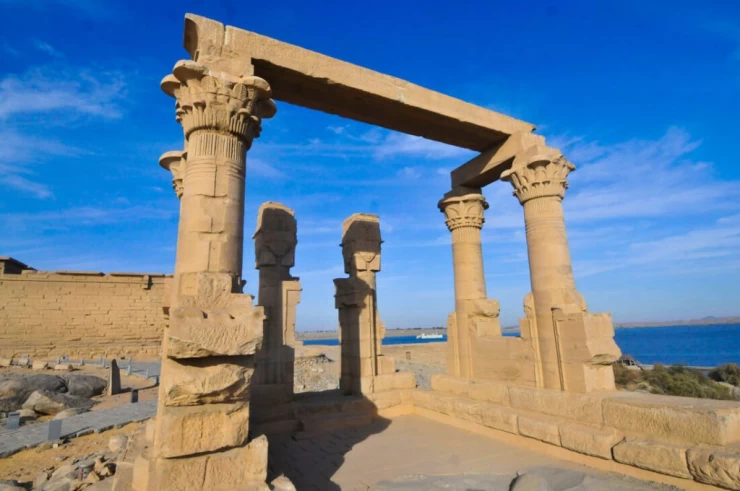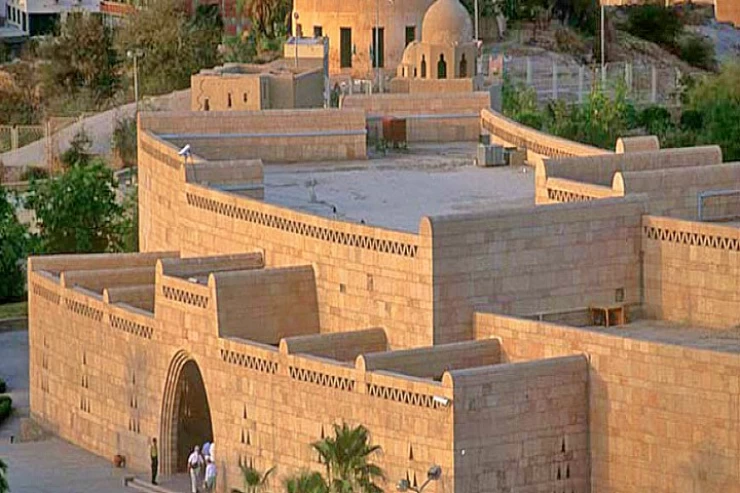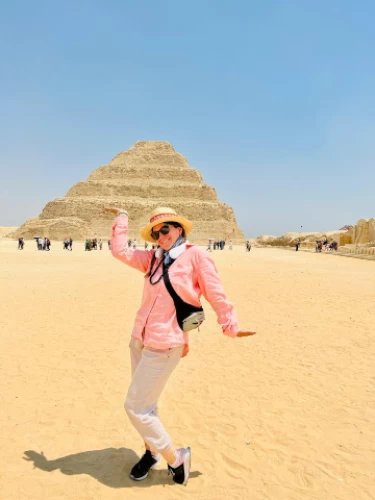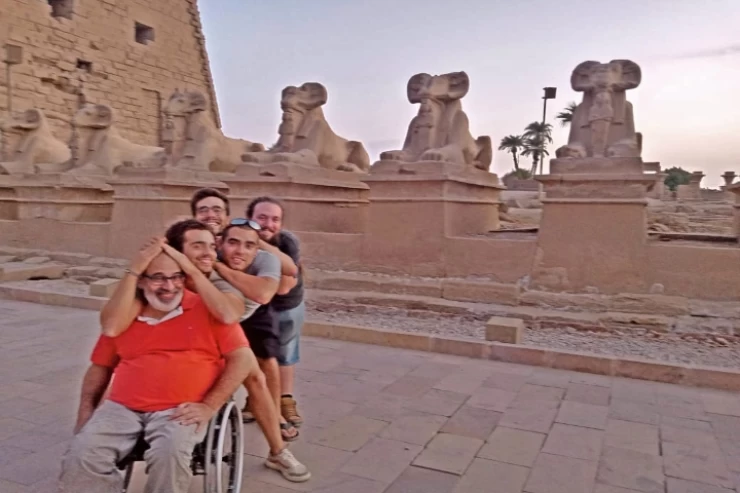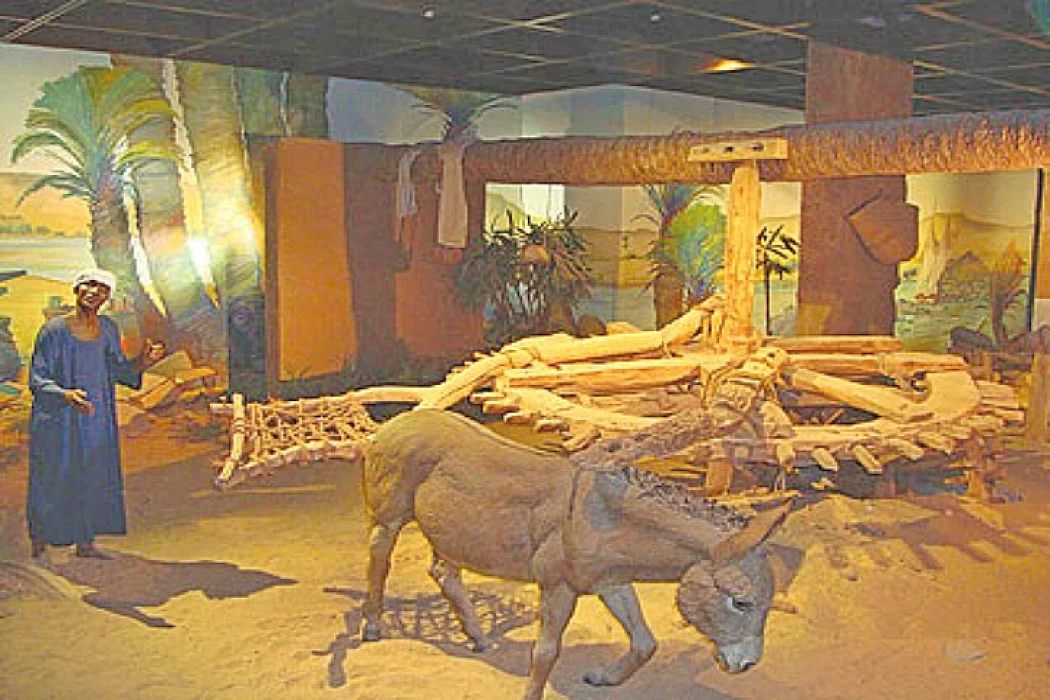
Nubia: The Land of Gold, Heritage, and Culture Along the Nile
On the banks of the eternal Nile River and south of the city of Aswan lies the Nubia region or the land of gold, as the ancients called it thousands of years ago, with all its fragrant odors and smiling and kind brown faces, similar to the Nile in its generosity and generosity, the people of Nubia ... With clear brown skin, a kind, tolerant and welcoming spirit, intelligence, sincerity, patience, ideals, morals and the preservation of high social customs, Nubia with its picturesque nature, the waters of the Nile, the clear sky, the beauty of the houses with their expressive drawings, their calm colors, the ancient land of Thebes, and when the world was in darkness and inhabited caves, Nubia enjoyed civilization, science and progress.
Its name is derived from the word (Nub), which in the ancient Egyptian language means gold, hence it is called “the land of gold”, as it was famous for the gold mines that were called Nubria
Nubia, a historical overview
The roots of Nubia's civilization go back ten thousand years, and the ancient Egyptians called Nubia “the land of bows” due to the skill of its people in archery, and major civilizational kingdoms flourished in it, some of which extended their influence over the entire Nile Valley to the Mediterranean Sea in the north, and the people of Nubia were the first line of defense to protect Egypt's southern borders throughout history, as the history of Nubia is replete with many events and victories The Nubians were protecting Egypt's southern borders, and among the people of Nubia was King Mina, the unifier of the two countries from the first Egyptian dynasty, and when the Hyksos invaded Egypt, King Ahmose used the skilled craftsmen from Nubia in rebuilding the Egyptian army that expelled the Hyksos, and if the word “Nub” means gold, the pharaohs extracted gold from it to craft their artistic heritage.
In the modern era, Muhammad Ali used Nubians in the formation of the Egyptian army, and the people of Nubia made great sacrifices to build the High Dam and emphasized their keenness on the supreme interest of the nation.
The Nubia region includes 38 villages and one bandra, and the Nubian village or city consists of a group of widely spaced dwellings, which are often located on the bank of the Nile or both banks and are called Najaa. The Nile is the only transportation route in Nubia, as the conditions and nature of the region make it difficult to find roads suitable for land transportation, and Nubians use Nile steamers and dhows to move from one village to another, while animals are used to move through mountain paths between nearby villages.
International Nubia Day
Nubians celebrate the World Nubia Day on July 7 annually. You can visit this village through Egypt Day Tours. The idea of the celebration was proposed in 2004 by a number of Nubian blocs and led by the Nubian intellectual Muhammad Suleiman Waliyab, the idea of unifying the date of the Nubian Day events to be held in various countries of the world on a known and announced date, the goal of dedicating an international day for Nubia was The Nubians chose the seventh day of the seventh month of each year to be the International Day of their city, because it is associated with many Nubian customs, such as the descent of the child born to the Nile water on the seventh day, and the woman after childbirth passes 7 times on incense, and even visits to the tombs after death last for seven days.
Before 2004, several Nubian entities and entities held events in different cities and capitals of the world under the name “Nubian Day”, which includes festivals, meetings and seminars, and several countries held the International Nubian Day, including but not limited to “Nubian Day in Stockholm, Halva, Congress and Britain”, due to the large Nubian community in these countries, and the celebration of the International Nubian Day in Cairo began in 2015, and before this year individual celebrations were held between Nubians and each other, until the Opera House decided to hold an annual ceremony for them.
Nubian language.
The “World Encyclopedia of Languages” defines the Nubian language as a desert Nilotic language, spoken by the inhabitants of southern Egypt and northern Sudan, with about one million speakers, and the Nubian language is divided into two parts among its people, the “Nubian Treasures dialect” and the “Nubian Vedika dialect. The Nubian language is divided into two parts among its people, namely the “Nubian Treasures dialect” and the “Nubian Vedika dialect.
Nubian art ... Its signs and symbols
Due to the unique nature that God endowed the people of Nubia with the elements of the fertile environment, their connection to the Nile River, and the specificity of their society, Nubian art reflects the specificity of Nubian culture, and includes symbols whose connotations reflect popular and magical beliefs, and this is evident in the tattoos that Nubian men and women alike are adorned with, and the wall paintings that decorate the facades of houses inside them, as well as beadwork and decorations of fronds and wickerwork.
The sword symbolizes heroism and courage, the crescent moon and star suggest optimism, as does the black cat, which also suggests optimism, while the raven and owl are symbols of misfortune and destruction, while flowers and roses symbolize friendship and love, and the pitcher and prayer rug symbolize purity and purity.
Nubia (Arabic Nuba) A region of northeastern Africa, located between Egypt and Sudan, crossed longitudinally by the Nile, bounded on the north by the Aswan Locks, on the east by the Red Sea, on the south by the confluence of the Blue Nile and the White Nile, and on the west by the Libyan Desert. Only in the immediate vicinity of the Nile, interrupted by six locks, is a strip of arable land crossed by railroads; here are the principal centers: the Berber, the center of caravans to the Red Sea, at the confluence of the Atbara; the old center of Wadi Halfa, on the border of Egypt and Sudan, was inundated after the construction of the Aswan Dam.
At the beginning of the historical epoch (3500 B.C.), while Egyptian civilization was acquiring more and more independent features, a delayed sub-Neolithic (the so-called "Group A and B" cultures) continued in Nubia, which at the end of the Old Kingdom (2250 B.C.) developed into an autonomous and rich ceramic production (the so-called "Group C" culture, which would form the initial background of all overlaps of Egyptian Middle Kingdom and New Kingdom culture).
The Old Kingdom was interested only in exploiting the gold mines of the Nubian land; in the Middle Kingdom, military expeditions undertaken to protect the country's southern borders and trade routes led to the construction of a series of Egyptian fortresses along the river as far as Semnakh, south of the second cataract, without a process of amalgamation with the indigenous population or forms of expansion. Under the New Kingdom, under Thutmose I (1504-1492 BCE) in the
Nubian culture does not reflect the connotations and beliefs of its people. Tattoos are considered cultural symbols of Nubia for both men and women, as are murals, beadwork, and palm-frond and wickerwork, which attract tourists, especially foreigners.
The decorative elements, according to the State Information Service, carry specific connotations. The sword symbolizes heroism and courage, while the crescent and star symbolize optimism. The crow and owl are also symbols of bad luck and destruction.
It is called the Land of Gold. The name Nubia is derived from the word (Nub), which means gold in ancient Egyptian. It was also famous for the gold mines that were called Nubaria. In the dictionary, we find that the word Nub means: a generation of people living in a country named after them and located in the southern part of Egypt.
In another sense, the name is attributed to Nabata, the son of the Prophet Ishmael, peace be upon him, and since their rule of the Nile Valley and Africa, they mixed with the local tribes. Over time, many of the African tribes that were under the rule of the Nabataeans took the same title. It is now noticeable that there are dozens of tribes of different races under the same title, with different tongues, and the same title remained, which is the Nubians (Nuba).
It is a Nilo-Saharan language of the Eastern Sudanic branch in southern Egypt and northern Sudan. Most of its speakers lived in the Nile Valley, in what became Lake Nasser after the construction of the High Dam south of Aswan. Its speakers number approximately one million.
Between the eighth and fifteenth centuries AD, Nubians wrote their language in the Coptic alphabet with a few additional letters. However, today, they rarely write it, and those who write Nubian use Arabic or Latin script.







